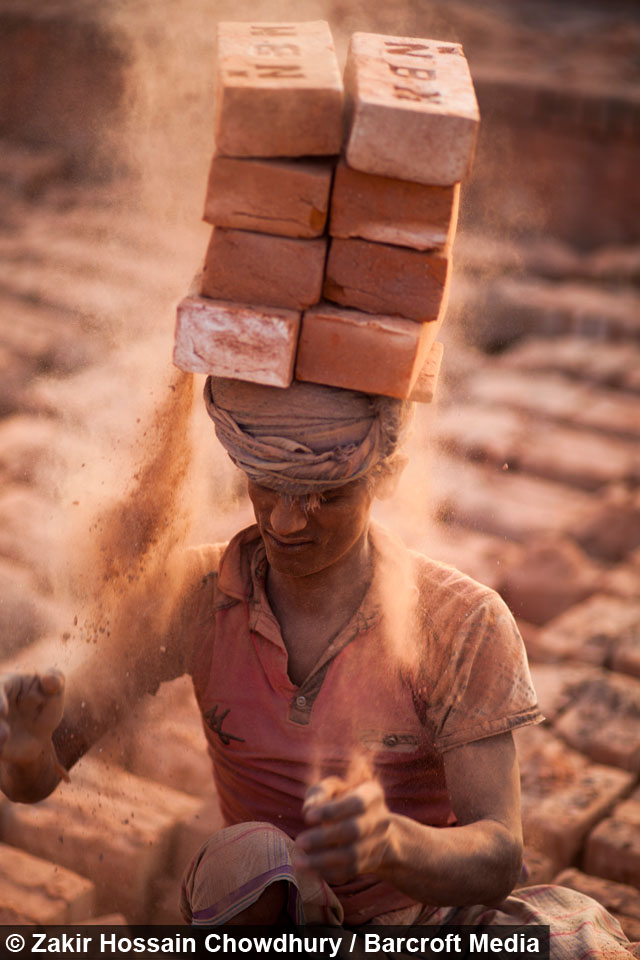Brick By Brick: The Bangladeshi Factory Workers Who Do All The Heavy Lifting
By Tom Gillespie @TomGillespie1
Scroll down for the full story
Male workers caked in dust are pictured balancing huge stacks of bricks on top of their heads.
Children are also seen toiling away in the chalky red brick-making field, where they work in bruising conditions to help support their families.
People from all over Bangladesh relocate in order to work at one of the country's thousands of brick factories.
The sites offer work to men and women from young teenagers to grandparents - and in some cases have been known to employ whole families.
Dust exposure and the crushing loads pose obvious health risks for the industrious workers, with the brick kilns spewing out vapor that is harmful to the eyes, lungs, and throat.
Alim Uddin, who works in the factory in Dhaka, said: "I have come from Kishorgonj district to work here, my wife is also with me to work.
"We will work here six months and then return home.
"During rainy season we have nothing to do so we work from dawn to dusk now to earn more."
These photos were taken by Bangladeshi photographer Zakir Chowdhury, who visited Dhaka on December 10.
Zakir says the workers endure the harsh conditions for between £1.60 and £2.60 a day.
Another worker at the site, Shuja Mia, 55, said, "I have no other option to do easy job, so I am working here until I am in old age.
"After a month I have earned a little money and I send it then to my wife who is living in my home district Bogura."
Production is mainly done by hand, as soil is mixed with water, which is shaped into bricks using wooden frames.
These are left to drying in the baking heat before being burned in kilns.
Natural disasters and rising sea levels caused by global warming are an active threat to Bangladesh - and the country's huge brick-making industry is adding fuel to the problem.
According to the United Nations Development Programme (UNDP) there were around 8,000 kilns around the country in May last year.
A 2014 World Bank report claims the country's brick fields expel more than 9.8 million tons of greenhouse gases into the air each year.
That is due to a combination of old technology, weak enforcement of environmental legislation, and a lack of corporate responsibility.
There is also a heavy environmental cost beyond the air pollution, as trees are cut down to provide fuel for factory furnaces.









